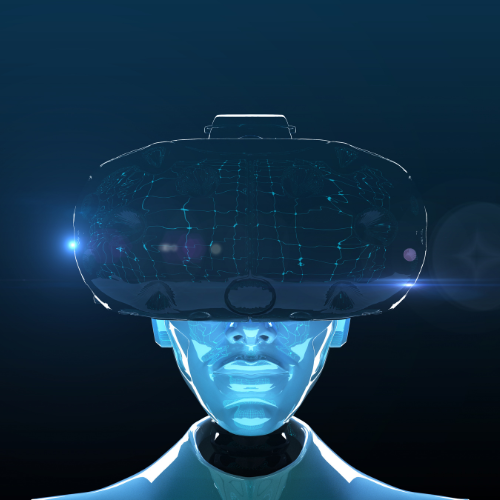Remote working is one thing and hybrid working has certainly become the norm for many of us in this post pandemic world, but how about the idea of a Virtual Reality workplace? Pie in the sky? Probably not actually and probably sooner than we think. The rapid emergence of Virtual Reality (VR) and Augmented Reality (AR) over the last few years has introduced the very real possibility of virtually creating any working environment and convincing avatars of the employees who work there.

There are companies like Meta’s Reality Labs, HTC, The NineHertz, HQSoftware, iTechArt, Samsung, Microsoft, Unity, Viron IT, Alphabet/Google and Next/Now to name but a few who are creating hardware and building software enabling us to essentially replicate everything we can do in a workplace in VR. But do we want to become avatars of our former selves? and is a VR place of work truly able to replace a physical one when it comes to human interaction and effective collaboration in the workplace?

Advantages of a virtual reality workplace
You can see the appeal of the VR workplace — bringing colleagues together from anywhere in the world, in a digital Nirvana where they (or at least their doppelganger avatars) can physically collaborate on projects, prototypes, practices, and procedures, socialize and learn as though they were all in one place. There is no doubt that the ability of VR to generate real-size scales of any object, and allow people to manipulate it, change it, rotate it, and walk around it; allows for a truly immersive collaborative experience and has powerful applications across a multitude of industries and not just traditional business environments, but everywhere from Healthcare and Education to Manufacturing, Engineering and Science.

The possibilities for VR are endless really, you can mimic your actual office environment complete with fancy breakout areas and chillout zones or create a workspace literally anywhere, under the stars, on a boat, in a high tech lab, in a busy warehouse, the perfect environment for your business where collaboration creativity and productivity can thrive.
From an employer’s perspective paying for office space and all the expenses associated with a physical location such as heating, lighting and the numerous other perks we have all come to expect from our working environment are eradicated or made virtual as employees work from home using just a computer and a VR headset. But will you be able to taste the virtual free snacks? time will no doubt tell.

VR eliminates the need to pay business travel costs, instead of flying in to meet someone in person, all you have to do is pop on a VR headset. Advocates for the VR workplace claim being able to meet virtually is better for the environment and is a far better use of time and budget than travelling to meet in person.
For employees there is no need to leave home, saving time and money by taking away the daily commute to work. Dressing for the office becomes a thing of the past, your office avatar might be wearing designer gear but in reality (real reality) you can be conducting that crucial meeting with international customers from your couch in your PJs !

Disadvantages to working in VR
Virtual Reality working isn’t necessarily simple or indeed desirable.
Employers might save money on office overheads but setting up a Virtual Reality space doesn’t necessarily come cheap. Headsets are expensive and complex pieces of kit and workers need powerful PCs that can run a VR environment, not to mention the costs of purchasing the software that would allow companies to create their virtual reality environment in the first place.
There are practical downsides with the technology as it exists currently. VR headsets are heavy and uncomfortable to wear for long periods of time and could be detrimental to the health and wellbeing of employees. There is a long way to go before working an 8-hour day in Virtual Reality is viable.

Creating a company culture is much more difficult when people never meet face-to-face and there are, of course, serious questions about losing our ability to socialise and relate effectively to others in a world dominated by screens and headsets. VR could be seen as dehumanising and isolating rather than enabling. Isn’t it more fun and more productive to actually meet and collaborate with colleagues and customers and learn from being in a room with our mentors and trainers?
Can Virtual Reality ever take the place of real human interaction? We will find out sooner rather than later….the VR workplace revolution coming to a headset near you.

